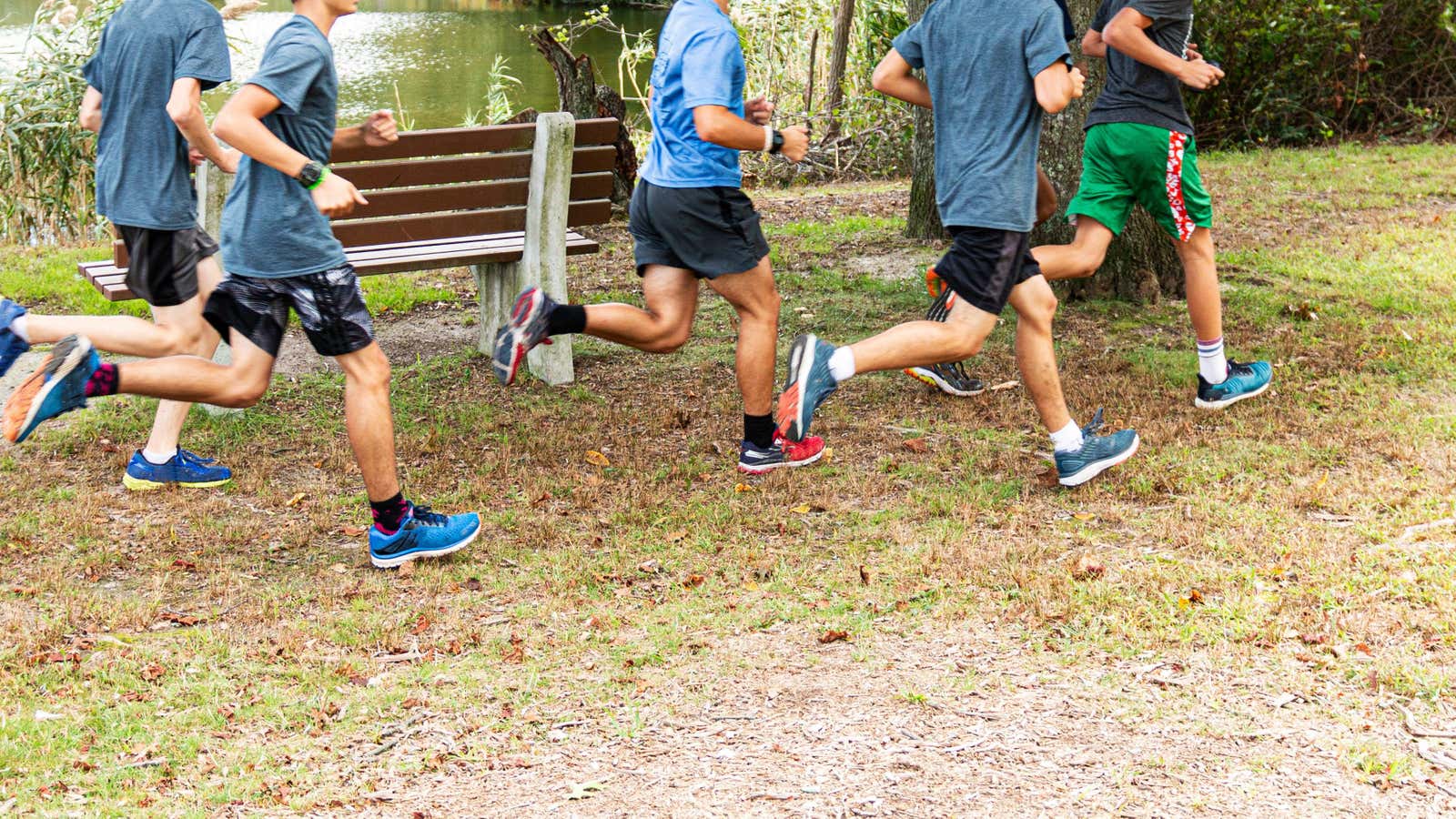How to Get Kids to Exercise More Without Being Parents

My husband and I usually switch between watching our toddler to go and play our adult sports like volleyball, tennis and boxing.
When it’s my husband’s turn, the two often go on a “fatherly adventure,” in which my husband rides a bicycle with my son in a seat attached to the handlebars to a nearby duck pond. When it’s my turn, I usually take my son to the park so we can run around and burn off a little of the kid’s extra energy. My son got into the habit of telling me: “Mommy, run!” at this point I am expected to start running while he tries to catch me.
All this juggling can be chaotic, but it is done on purpose. I want my son to grow up with the understanding that our body and mind are the happiest when they exercise regularly.
But this is easier said than done in a world where many of us go from sitting in class all day to working all day in the office, traveling back and forth by car. It is also difficult when you live in an area that is unsafe or inaccessible for walking or cycling. Add to this the general idea that physical activity is not “fun”, but rather the routine work that we do to achieve some ideal of the body; along with a terribly dysfunctional kids’ sports culture. All of this together turns into a cool, difficult struggle to create positive associations with regular physical activity.
So what are you doing? How do we encourage our children to develop healthy relationships through regular exercise? This is a daunting task and of course there are no guarantees of success, but here are a few strategies to consider.
Set a positive example
If your kids grow up seeing you prioritize regular and enjoyable physical activity, they will likely remember this lesson even if you think they are not listening. Whatever physical activity you enjoy, try to find a way to make time for it and try to approach it in a balanced and sustainable way.
Make it a family activity
This is a little easier for younger children as they are often more inclined to do things with their parents. For older teens, this can be more difficult. However, if you can establish a regular schedule of physical activity, such as Saturday morning frisbee games, Sunday afternoon hikes or jogging at the annual turkey trot, even the gloomiest teenager is likely to show up from time to time.
Find a way to incorporate physical activity into your family’s daily routine
A regular, predictable schedule is a good way to develop long-term habits. Unfortunately, this can be challenging in a world where adults find it difficult to break away from work, while children are often over-scheduled and bogged down with homework.
If I’m both as a parent and as an individual, it’s that when I don’t put out the time, my mental health and energy levels plummet. I’ve also learned the hard way that when my son doesn’t get enough day to day activity, he becomes moody and more likely to take action. As difficult as it is to carve out this time, it will be worth it.
Find something that suits their interests
If you have a teenager who just wants to play video games, or a child who thinks they are not made for sports, the right answer is not to force them to do what they hate. (This can backfire.) But there are probably some forms of physical activity that they might enjoy.
One way to encourage children is to find activities that fit their interests. They may take dance lessons to get better at the theater, or run to develop lung strength for wind instruments, or practice martial arts under the pretext of developing faster reflexes for their video games. Whatever your child’s hobbies, see if any physical activity is related to that interest.
There are alternatives for kids who hate sports
For a child who is not into sports, it may be a good idea to find out why . Is it because they are turned off by the hyper-competitive atmosphere? Are they afraid to play in front of others? They just haven’t found the sport they want?
If they just don’t want to play a team sport, you can see if there is a particular sport that they like better, such as swimming, running, ice skating, or skateboarding. If that’s not for them, too, there’s a lot to be said for encouraging free play, whether it’s shooting from a hoop, jumping rope, or just cycling.